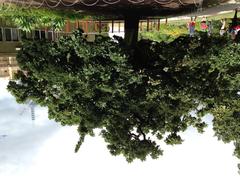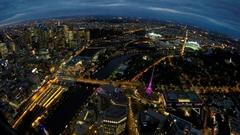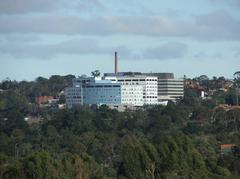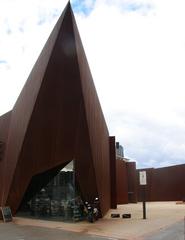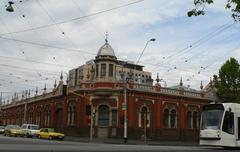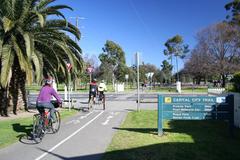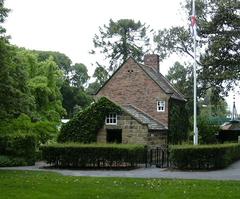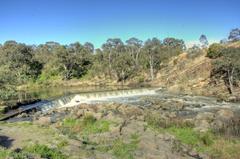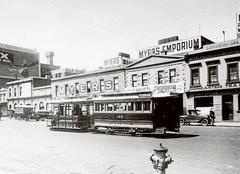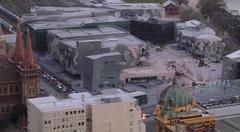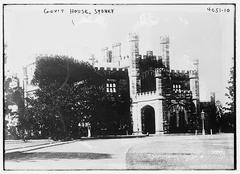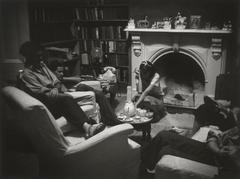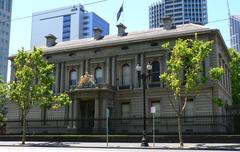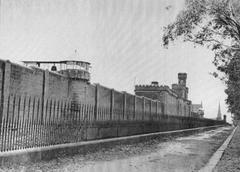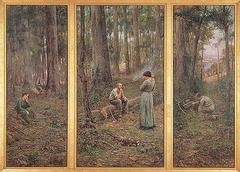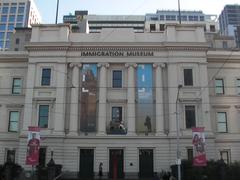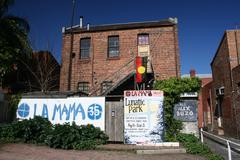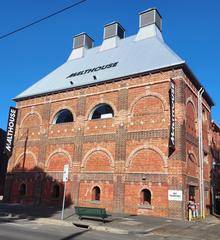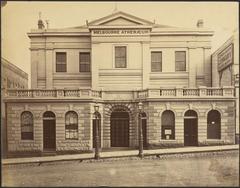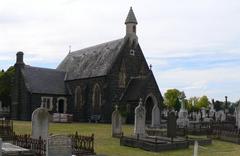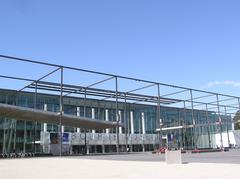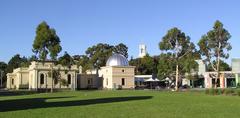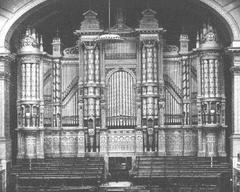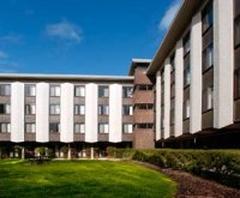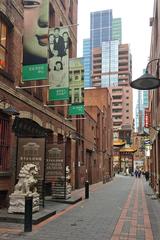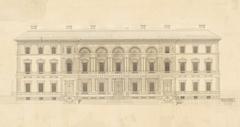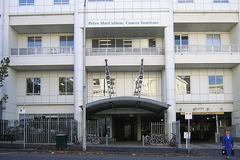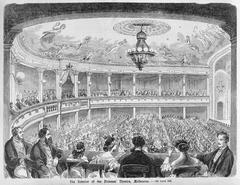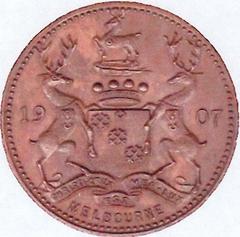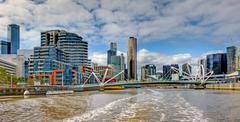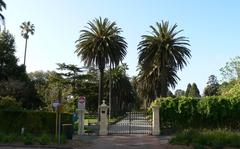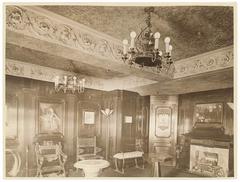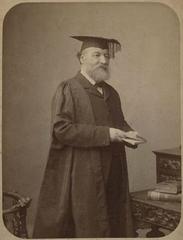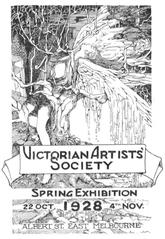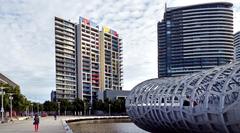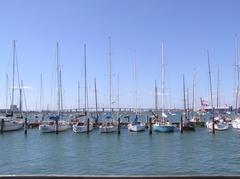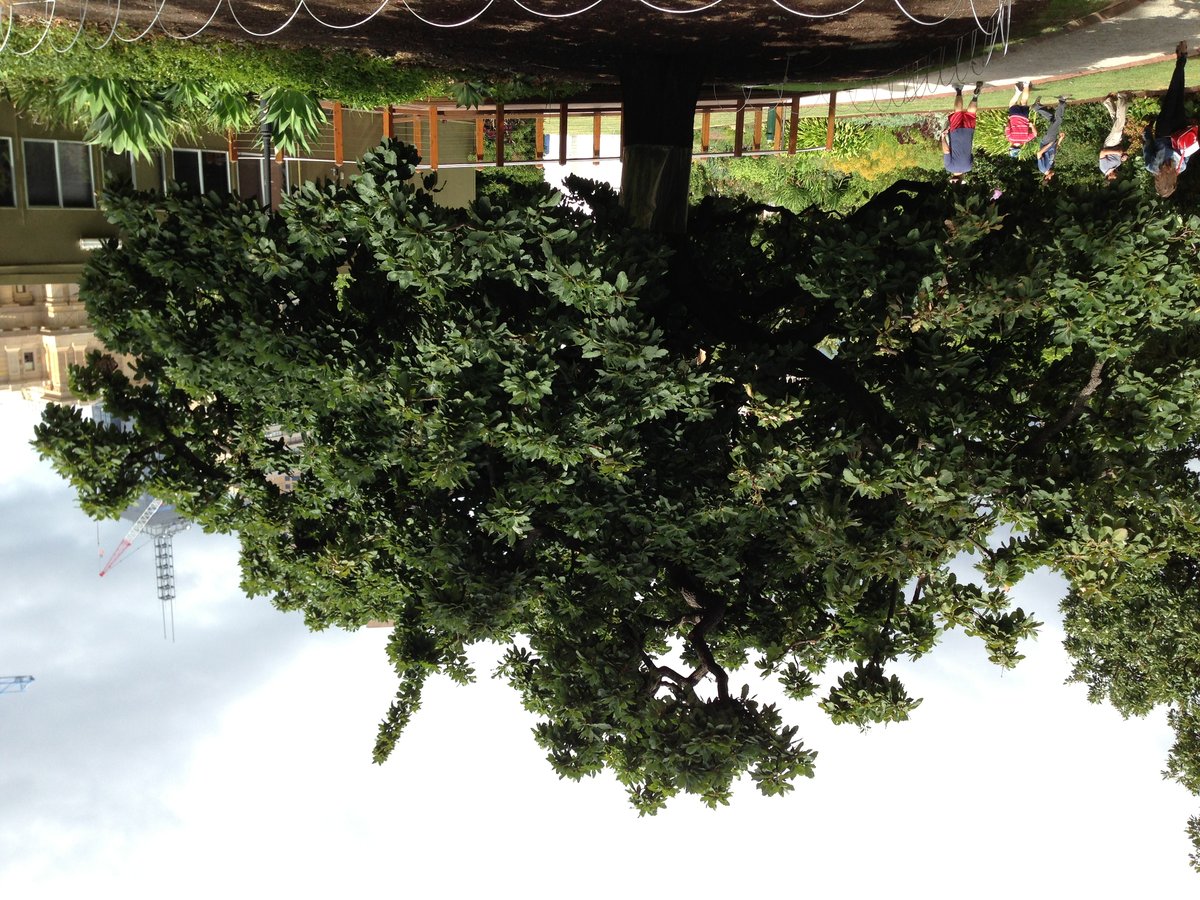
Federal Oak Melbourne Visiting Hours, Tickets, and Historical Sites Guide
Date: 14/06/2025
Introduction
Nestled within the heritage gardens of Victoria’s Parliament House in East Melbourne, the Federal Oak stands as a living monument to Australia’s journey towards Federation. Planted in 1890 by Sir Henry Parkes, often called the “Father of Federation,” this majestic Algerian oak (Quercus canariensis) commemorates the pivotal Australasian Federation Conference—a defining moment that led to the unification of Australia’s six British colonies (ABC Gardening Australia). The Federal Oak offers not only botanical beauty and historical resonance but also serves as a reflective space that acknowledges Melbourne’s Indigenous heritage, being situated on the traditional lands of the Wurundjeri Woi-wurrung and Bunurong/Boon Wurrung peoples of the Kulin Nation (City of Melbourne Visitor Info).
This comprehensive guide provides everything you need to know about visiting the Federal Oak, including its origins, historical and cultural significance, practical visitor information (hours, ticketing, accessibility), tips for making the most of your visit, and recommended nearby attractions. Whether you are a history enthusiast, a lover of nature, or a tourist seeking to explore Melbourne’s rich heritage, the Federal Oak offers a unique and meaningful experience (Australia Travel Hub).
Table of Contents
- Origins and Planting of the Federal Oak
- The Australasian Federation Conference and Its Significance
- Location, Setting, and Accessibility
- Botanical and Heritage Value
- Visiting Hours, Tickets, and Practical Information
- Photographic Opportunities and Atmosphere
- Indigenous Context and Cultural Significance
- Nearby Attractions and Complementary Experiences
- Tips for a Meaningful Visit
- Frequently Asked Questions (FAQ)
- Conclusion and Recommendations
- Key Sources
Origins and Planting of the Federal Oak
The Federal Oak was planted on March 27, 1890, during the Australasian Federation Conference at Melbourne’s Parliament House (Parliament of Victoria News). Sir Henry Parkes, then Premier of New South Wales, planted this Algerian oak as a symbol of unity, resilience, and the shared vision of nationhood. The choice of an oak—renowned for its strength and longevity—was deliberate, intended to reflect the enduring aspirations of the federation movement (Monument Australia).
The Australasian Federation Conference and Its Significance
The 1890 Australasian Federation Conference marked the first formal agreement among the colonies to pursue federation. The outcomes of this gathering set the stage for the drafting of the Australian Constitution and the eventual establishment of the Commonwealth of Australia in 1901 (ABC Gardening Australia). The Federal Oak, planted during this historic event, remains a living reminder of the collaborative spirit and democratic ideals that shaped the nation.
Location, Setting, and Accessibility
Location
The Federal Oak stands within the Parliamentary Gardens, adjacent to Victoria’s Parliament House on Spring Street, East Melbourne. The gardens are a tranquil, formal space designed in part by William Guilfoyle, landscape architect of the Royal Botanic Gardens (National Trust). Paved paths, manicured lawns, and interpretive signage make the site welcoming and easy to navigate.
Accessibility
- Wheelchair and pram access: Paved, gently sloping paths throughout the gardens (Time Out Melbourne).
- Public transport: Parliament Station and multiple tram lines serve the area.
- Parking: Limited street parking is available; public transport is recommended due to frequent traffic restrictions.
Botanical and Heritage Value
The Federal Oak is an Algerian oak (Quercus canariensis), thriving in Melbourne’s climate and now over 130 years old. Recognized by the National Trust for its historical and cultural significance, the tree is carefully conserved as part of Melbourne’s living heritage (ABC Gardening Australia). Its impressive canopy and commemorative plaque make it a focal point within the gardens.
Visiting Hours, Tickets, and Practical Information
- Visiting hours: The Parliamentary Gardens are open daily from sunrise to sunset.
- Admission: Free of charge; no tickets required.
- Guided tours: Parliament House offers public tours that often include information about the gardens and the Federal Oak (Parliament of Victoria News). Self-guided visits are supported by clear signage and the commemorative plaque.
- Amenities: Benches, lawns, and public restrooms (some inside Parliament House during opening hours).
Photographic Opportunities and Atmosphere
The Federal Oak and its surroundings provide excellent photographic subjects, especially during spring and autumn when the foliage is most vibrant. The tranquil setting is ideal for quiet reflection, reading, or contemplation, with benches and shaded lawns available. Non-commercial photography is welcome; drone use requires special permission.
Indigenous Context and Cultural Significance
The Federal Oak stands on the traditional lands of the Wurundjeri Woi-wurrung and Bunurong/Boon Wurrung peoples of the Kulin Nation (City of Melbourne Visitor Info). Visitors are encouraged to reflect on both the achievements of Federation and the enduring cultural connections of Indigenous Australians to the land (City of Melbourne Heritage).
Nearby Attractions and Complementary Experiences
Enhance your visit to the Federal Oak by exploring nearby historical and cultural sites:
- Parliament House: Guided tours delve into Victoria’s legislative history and architecture (Parliament of Victoria News).
- Fitzroy Gardens: Home to Cooks’ Cottage and ornamental plantings (What’s On Melbourne).
- Royal Botanic Gardens: A broader botanical experience (Something Off Freedom).
- Deakin Gallery: Inside Parliament House, displaying historical documents including the 1899 referendum electoral roll.
Tips for a Meaningful Visit
- Plan ahead: Check the Parliament of Victoria website for updates on garden access or events.
- Combine experiences: Join a Parliament House tour or visit the Deakin Gallery.
- Visit during off-peak hours: Early mornings and late afternoons offer a peaceful atmosphere.
- Respect heritage: Treat the tree and gardens with care; climbing or damaging the Federal Oak is prohibited.
- Reflect on context: Consider the site’s significance to both Federation and Indigenous heritage.
- Photography: Spring and autumn are ideal for vibrant photos.
Frequently Asked Questions (FAQ)
Q: What are the Federal Oak visiting hours?
A: The Parliamentary Gardens, including the Federal Oak, are open daily from sunrise to sunset.
Q: Is there an entry fee or tickets required?
A: No, visiting the Federal Oak and the gardens is free.
Q: Are guided tours available?
A: Yes, Parliament House offers public tours that often include the gardens and Federal Oak.
Q: Is the site wheelchair accessible?
A: Yes, paved and gently sloping paths make the gardens accessible.
Q: Can I take photographs at the Federal Oak?
A: Yes, non-commercial photography is welcome; drone use requires permission.
Conclusion and Recommendations
The Federal Oak is more than just a historic tree—it is a living testament to Australia’s journey to nationhood and a serene retreat within Melbourne’s vibrant urban landscape. Its enduring symbolism, accessible location, and integration into the city’s heritage make it an essential destination for visitors seeking a deeper understanding of Australia’s past and present. Combine your visit with other nearby attractions, take advantage of guided tours, and use the informative signage and commemorative plaque to enrich your appreciation.
For up-to-date information on visiting hours, special events, and heritage tours, consult the official Parliament House website. Download the Audiala app for interactive guides and follow us on social media for the latest updates on Melbourne’s historical sites.
Key Sources
- ABC Gardening Australia – Historic Trees
- Australia Travel Hub – Is Melbourne Worth Visiting?
- Parliament of Victoria News – Behind the Pillars
- Monument Australia – Federal Oak
- City of Melbourne Visitor Info
- City of Melbourne Heritage
- What’s On Melbourne – June Events
- National Trust – Victorian Tree of the Year
- Time Out Melbourne – Travel Tips
- Something Off Freedom – Melbourne Travel Tips
